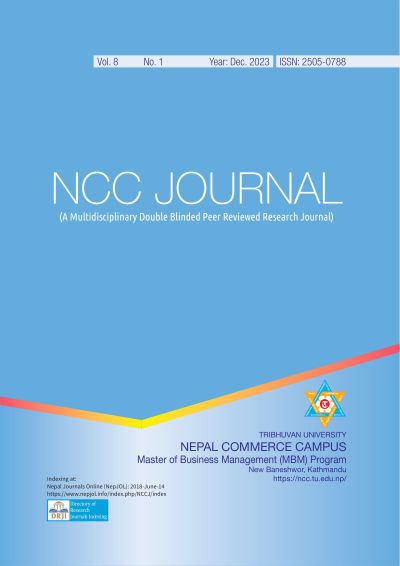Influence of University's Role, Curriculum, and Teaching Methodologies in Promoting Entrepreneurship Intention
DOI:
https://doi.org/10.3126/nccj.v8i1.63170Keywords:
New venture, industry alignment, startups, teaching methodologyAbstract
Entrepreneurship is acknowledged as a powerful force that drives innovation, job creation, and the establishment of new markets, making it critical for long-term growth and economic advancement. Entrepreneurial intention plays a crucial role before initiating a business venture. The study investigated the educational process by examining university culture, curriculum development, and teaching methodologies to predict student motivation levels. The study examined how a university's role, curriculum, and teaching methods affect students' entrepreneurial intentions. The study used a causal-comparative technique to explore the causal links between these characteristics and the intention to pursue entrepreneurship. Convenience sampling was utilized to collect data from 384 university students in Nepal. Correlation and regression methods revealed strong positive relationships between the entrepreneurship curriculum, the university's involvement, teaching methodologies, and entrepreneurial intent. The study emphasized the significance of a comprehensive approach to entrepreneurship education, focusing on practical teaching methods and a supportive academic atmosphere. The study highlighted teaching approaches as influential factors in shaping students' entrepreneurial intentions. The findings gave valuable insights for curriculum developers and government officials, allowing education to better address the expanding demand for entrepreneurship. The study addressed the need for curriculum modifications to enhance entrepreneurial skills and initiatives to align education more effectively with industry requirements.
Downloads
Downloads
Published
How to Cite
Issue
Section
License
© Nepal Commerce Campus, Tribhuvan University
CC BY-NC: This license enables reusers to distribute, remix, adapt, and build upon the material in any medium or format for noncommercial purposes only, and only so long as attribution is given to the creator.




